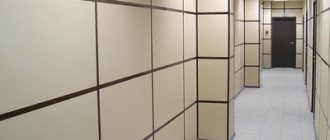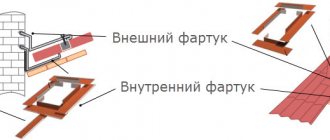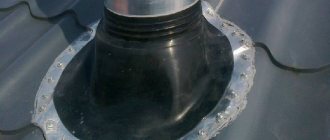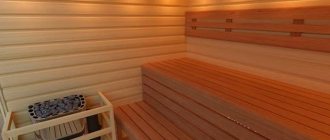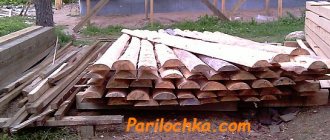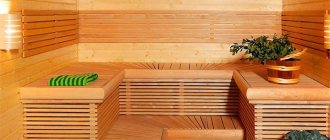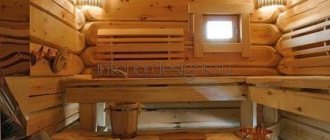The minimal open fires that every home has require careful attention. Non-combustible materials should be used to create comfortable and safe living conditions. Also, the use of fire-resistant boards, sheets or panels is also advisable in places where the presence of fire is not expected, for example in a roofing pie.
This review examines the concept of fire resistance (non-combustibility) in the context of building and finishing materials. Also presented are common non-combustible materials used at various stages of construction.
What is fire resistance of materials
Flammability should not be equated with fire resistance. Fire resistance means the ability of a building structure or material to resist the effects of fire and water in a fire.
The fire resistance limit is the time in minutes (in some cases, hours) from the start of a fire until the structure fails or warms up until the temperature on the surface opposite the fire rises to about 220°C, above which spontaneous ignition of organic materials is possible.
By structural failure we mean:
- Loss of bearing capacity.
- Collapse.
- Achieving irreversible deformations
- Formation of through cracks.
The fire resistance limit of wooden house elements is 15-20 minutes, steel frame ~ 30 minutes.
Combustible building materials are divided into:
| By flame spread over the surface | According to the toxicity of combustion products | ||
| G1 | Low flammable | T1 | Low risk. |
| G2 | Moderately flammable (organomineral materials) | T2 | Moderate danger. |
| G3 | Normally flammable | T3 | Highly dangerous. |
| G4 | Highly flammable (organic materials) | T4 | Extremely dangerous. |
Non-flammable materials include mineral materials: natural stones, concrete and mortars with mineral binders, ceramic and glass materials, metals.
Materials based on organic, plant components are normally and highly flammable . These include chipboard panels, fiberboard, and most synthetic plastic materials.
Low-flammable and moderately flammable are some organomineral materials that do not support combustion: fiberboard, wood concrete, wood impregnated with fire retardants. When exposed to open fire, they smolder, do not give open fire or become charred. Once the source of fire is eliminated, smoldering stops.
When exposed to fire, some organic materials do not produce an open flame, but sinter, melt and saturate the atmosphere with a number of gases harmful to human health. When burned, wood and polystyrene foam emit two types of gases (CO - carbon monoxide, CO2 - carbon dioxide), and plastics - phenol, aluminum oxide, sulfur and other harmful substances.
How to protect yourself from fire?
Based on all of the above, the following conclusions can be drawn:
- When choosing materials for finishing the facade of a house, it is necessary to take into account their flammability. Highly flammable, fire-hazardous solutions should be avoided.
- The ideal option for finishing a building, from a fire safety point of view, is NG material - non-flammable. It is also allowed to use finishing products belonging to group G1 (low-flammable).
- If there is a need to use a material of group G2 (moderate flammability) in finishing, it is important to use it in combination with mineral insulation (non-flammable stone wool).
- Wet facade finishing technology is considered a reliable solution. In this case, in combination with mineral-based decorative plaster (NG), conditionally non-flammable polystyrene foam (G1) can be used.
- High-quality thermal panels also belong to group G1. However, before buying panels, you need to make sure of their quality and safety. It is better to entrust this task to professionals.
- The use of wood and plastic siding in finishing is unsafe. Natural material requires effective fire protection treatment, and vinyl siding can only be installed with non-combustible insulation.
The best way to protect your house from fire is to entrust the finishing of the facade to experienced builders. We will select suitable materials and ensure their high-quality installation.
Foam glass is a non-flammable thermal insulation material
Foam glass blocks are made from glass powder that has undergone a sintering process. The chemical composition of foam glass is identical to the composition of classic glass and includes oxides of silicon, calcium, sodium, magnesium, and aluminum.
Foam glass
Foam glass is a completely non-flammable material. It contains no oxidizing or organic components. When foam glass is heated to high temperatures, it only melts (like ordinary glass) without releasing gases or vapors.
The service life of foam glass blocks while maintaining their protective characteristics is more than 100 years.
About Us
The Ardko company operates in the field of production and supply of modern construction and finishing materials. We strive to provide a high level of product quality, competitive prices and strict compliance with order deadlines. We will be glad to see you among our customers and partners!
Consultation
We provide all the necessary information: samples, technical characteristics, specifications and certificates.
Affordable prices
Prices from the manufacturer. Discounts for regular customers. Promotions and sales.
Fast production times
The average production time for custom items is 5-7 working days. An installation profile is always available.
Delivery
You save your time searching for transport, as we constantly cooperate with reliable carriers.
Guarantee
Warranty on all materials is 12 months. We support high-quality installation of panels so that it goes without problems - your installers will receive quick support by phone.
Non-flammable wallpaper for walls
Fiberglass wallpaper (glass wallpaper) has fire-resistant properties. The fibers are made from quartz sand, soda, dolomite and lime.
Glass wallpaper
Non-combustible glass wallpaper is intended for finishing all types of buildings and has the following properties:
- The wallpaper is environmentally friendly.
- Convenient to use.
- Does not absorb foam.
- Wallpaper can be washed.
- Material made from fibers perfectly absorbs deformation forces (for example, from plaster).
Using a special self-adhesive tape in the seams when painting, you can completely eliminate the visibility of the seams.
Fiberglass wallpaper is available in both white and colored. They may differ in density, strength, texture and pattern.
A little more about laying tiles
Types of fireproof tiles
Refractory tiles for stoves, with high heat resistance, are produced by manufacturers in several versions:
- terracotta - with an unglazed surface and a highly porous structure. This type of heat-resistant tile was one of the first to appear on the market;
- majolica - with a glazed surface and a highly porous structure;
- clinker - with a fine-porous structure, characterized by increased strength;
- porcelain stoneware - the composition includes: quartz sand, metal oxides, marble and granite chips. This material is resistant to high temperatures and temperature changes, and is also environmentally friendly.
Some nuances when laying tiles
To ensure that stove tiles serve you for a long time, use special heat-resistant adhesive for stoves and fireplaces when laying them. The thickness of the adhesive composition should be 2-5 mm, otherwise the risk of cracking of even the most durable material increases significantly. The glue should not have a specific odor. If installation is carried out on metal parts, keep in mind that metal expands when heated and therefore you need to leave approximately 1 cm indentations. If the cladding of stoves is carried out outdoors, use moisture-resistant glue. Laying is carried out only on a plastered surface. The cut pieces are placed at the very end. Correct installation technique extends the life of the material.
What is the difference between heat-resistant tiles and conventional cladding?
Heat-resistant tiles for stoves and fireplaces differ from simple cladding in that they have a low water absorption coefficient (less than 3%). Thermal tiles can withstand very high temperatures, do not crack or change color. This material is resistant to severe frosts, so it is suitable for finishing stoves located in the open air. The advantage of using such cladding is also its heat transfer. Heat-resistant finish prevents flue gases from entering the surrounding area. Caring for her is quite easy and simple. The material has a variety of shades and textures, so you can easily choose the right option for any interior.
Where can ceramic tiles be used?
Ceramic tiles for stoves and fireplaces are, first of all, a decorative material that is designed to make a fireplace or stove more beautiful and create a special, unique style. The material is not used for cladding so-called working surfaces, that is, it is not used for finishing, for example, heaters (in sauna stoves) and the internal surfaces of a stove or fireplace. In the photo below you can see an example of a fireplace lined with ceramic tiles. As you can see, it is used only for decorative purposes.
What is the difference between fireclay tiles and ordinary ceramic tiles?
First of all, fireclay tiles differ from ordinary ceramic tiles in their greater thickness and variety of shapes and sizes (you can make custom-made options of any shape and any size). This material is not a mass-produced product, so it has a special appearance, characteristic of handmade products. Fireclay tiles are quite durable, heat-resistant and moisture-resistant. When broken, you can see the presence of fireclay grains in the structure, which are absent when a regular ceramic one is broken. Clinker tiles have a similar structure, but they are much denser. The price depends on the artistic execution (painting, mixing different glazes, etc.).
Are tiles suitable for lining a stove?
Not every tile is suitable for lining stoves. When choosing, keep in mind that the material will be used under conditions of constant heating and cooling. Experts say that it is better to choose small tiles for stoves and fireplaces (no more than 25x25 cm). It is advisable to choose matte-colored tiles, since over time a network of small cracks will form on the glazed surface. Tile should not be used at all if the stove is located in a country house that is not intended for permanent residence and is heated only in winter - the tile cannot withstand this regime and soon begins to crack and crumble.
Fire-resistant vermiculite boards for walls, roofs and chimneys
Vermiculite boards are fire-resistant materials and have the following properties:
- They are chemically neutral.
- They are inert and do not have alkaline impurities.
- Not subject to corrosion.
- Can be processed with conventional paints and adhesives.
- They do not require any protective measures during installation and operation.
- In fire conditions they do not emit toxic or other harmful substances.
Vermiculite slabs
Such slabs are made by hot pressing from a composition based on calcined expanded vermiculite, liquid glass and inorganic targeted additives, which in the event of a fire provides the highest degree of fire protection for any structures (including metal ones).
During the firing process, vermiculite can increase its volume by 10–15 times. After cooling, the material retains its acquired shape.
Scope of application of vermiculite:
- Fire protection for load-bearing metal structures and air ducts with a fire resistance limit of 0.75-2.5 hours.
- Fire protection of wooden, including load-bearing building structures with a fire resistance limit of 0.75-2.5 hours.
- Increasing the fire resistance of metal air ducts, shafts, casings, sleeves, cable ducts, fire barriers.
- Used in the manufacture of fireproof doors, valves, safes, partitions and suspended ceilings
- It is used for structural thermal protection and fire protection of chimneys during the installation of fireplaces, stoves and other energy equipment.
Fire retardant efficiency group, depending on the thickness of the vermiculite: group 1 (at least 150 minutes) with a material thickness of 48 - 50 mm; Group 2 (at least 120 minutes) with a material thickness of 32-40 mm; Group 3 (at least 60 minutes) with a material thickness of 20-25 mm.
Gypsum fiber sheet
Gypsum fiber sheets (GFL) are produced by semi-dry pressing of a mixture of gypsum and cellulose waste paper; they are characterized by excellent technical and operational properties. These sheets are durable and have a good degree of fire resistance.
Gypsum fiber sheets are universal in use and are popular and in demand in construction and finishing works. With their help, interior partitions are erected, floors are screeded, suspended and level ceilings are installed, and walls are lined. They are indispensable everywhere as fire protection for any structure. Users value GVL as a facing material used to cover wooden surfaces for its low cost and fire resistance.
Mineral wool fire retardant products
Mineral wool fibers are able to withstand temperatures above 1000°C without melting. In the process, at temperatures above 250°C, the binders of the material evaporate, and the fibers, due to chaotic adhesion, provide cohesion and sufficient strength, creating protection from fire.
Mineral wool fire retardant products
Mineral wool fire-retardant materials are successfully used for insulating fireplace and stove pipes, external walls, roofs, and floors.
Care Tips
In houses with stove heating, maintaining the stove and fences that protect the combustible structures of the house from overheating in good condition is the key to trouble-free living for its owners. Fire is no joke, and there are no trifles in observing fire safety rules! If they say that a sheet of metal measuring 500x700 mm is needed in front of the furnace loading door, it should be there!
Every year, before the start of the heating season, you should check the condition of the heating appliances at home. It is necessary to check whether the heat-resistant plaster of the stove is damaged, whether there are cracks in the chimney, or whether the facing tiles have fallen off. All identified defects must be corrected in a timely manner.
Magnesium glass panels - a universal fire-resistant finishing material
Magnesium glass sheet is a finishing material based on shavings, magnesium chloride and fiberglass. It is flexible, durable, fireproof and moisture resistant.
The reinforcing fiberglass mesh in the composition allows the glass-magnesium sheet to bend with a radius of curvature of up to three meters. Thanks to this, the material is convenient to use on uneven surfaces without the risk of sheet fracture.
Magnesium glass panels
This fire-resistant material is environmentally friendly. Even when heated, it does not release toxic substances.
Scope of use
The panels are used for finishing rooms and serve as fire-resistant screens when there is an open source of fire. Modern non-combustible panels are produced using the latest technologies and in terms of external characteristics they are not inferior to conventional finishing materials.
In private housing construction, such options can rarely be seen; more often, materials are chosen for finishing industrial buildings, warehouses, offices, commercial premises, airports, and halls. Balconies and kitchens can also be lined with non-combustible panels.
The presence of finishing made of non-combustible materials excludes claims from the fire inspectorate.
Non-combustible panels are often found on walls and ceilings. Thin and light sheets, 3 mm thick, are mounted on the ceiling, and products with a thickness of 5 to 8 mm are chosen for the walls. To create partitions, panels from 6 to 10 mm are suitable. Sheets more than 1 cm thick are used as external cladding. They can also be laid on the floor.
Fire retardants to improve fire resistance
Fire retardants are special substances that increase the fire resistance of initially combustible materials.
Basic requirements for fire retardants:
- Preventing combustion and smoldering of the protected material.
- Not capable of causing corrosion of metal parts.
- Ability to act over a long period of time.
- Fire retardants should not increase the hygroscopic properties of wood.
- Harmless to people and animals.
- The compositions should not affect paint coatings or create difficulties during mechanical processing of the material.
One of the best fire retardants is disubstituted ammonium phosphate (diammonium phosphate). When heated, it releases phosphorus oxides, which cover the wood with a protective film, and a non-flammable gas - ammonia. Diammonium phosphate is usually used in a mixture with ammonium sulfate.
There are two types of fire retardant compounds, which are based on fire retardants:
- For deep fire-retardant impregnation of lumber under pressure in industrial autoclave installations.
- For surface fire retardant treatment. This type includes traditional mortars used on construction sites, in attics, on roofs, and rafter systems. The method of application in this case is with paint brushes, rollers, spraying with construction spray guns in two layers with a significant drying period between layers.
Decorative wall panels FIREPROTEC HPL
Decorative wall panels FIREPROTEC HPL, which are characterized by fire resistance, are produced on the basis of high-quality non-combustible FIREPROTEC SML Premium Standard panel or GSP (gypsum particle board). HPL panels for indoor use are used in kindergartens and schools, offices and many other premises to create a comfortable and cozy atmosphere.
Fire resistant paint
Fire retardant paint is a mixture of binder, pigment and filler. Such compositions are often prepared using potassium liquid (silicate) glass. Also included in appropriate proportions are fire-resistant fillers, white, colored pigment, potassium liquid glass and special additives. Ground vermiculite, perlite, talc, kaolin wool fibers, and fluffed asbestos are most often used as fillers.
Fire-resistant paint is capable of spontaneous hardening, and the resulting film can serve both for fire protection and for decorative purposes.
Fire-resistant paints on liquid glass are used for interior finishing work and to increase the fire resistance of wooden structures made of fiberboard (fibreboard) and chipboard (chipboard). Organosilicate compositions can be used for painting exterior elements and metal structures.
Cement particle boards
Cement particle boards (CPB) are considered an ideal material for sheathing partitions in flammable rooms, as well as the frame of buildings outside. These slabs are used to level subfloors as they have a hard and smooth surface. The slabs are easy to saw, fireproof, resistant to moisture and temperature fluctuations.
additional characteristics
A sheet of metal, as well as a number of other fire-resistant coatings, must have certain properties and characteristics that will make operation as safe as possible.
Product marking:
- A parameter such as flammability is designated by the capital letter G. It varies from 1 to 4, where 1 is the minimum degree of flammability;
- The degree of flammability is marked B. Flammability is marked from 1 to 3. 1 is difficult to ignite;
- It is important to pay attention to the degree of smoke generation (D). Marking from 1 to 3;
- Toxicity (T) plays an equally important role. From one to four. 1 is the least toxic;
- Also, many products are marked with the letters RP, which indicates the degree of how quickly and in what quantity the flame spreads. They are designated by a numerical value from 1 to 4. 4 is the maximum degree of fire spread.
When purchasing, also pay attention to the product class (KM). The number 0 denotes various gypsum and cement mortars. 1 – these are natural minerals, ceramics, porcelain stoneware and bricks. Class 2 is given to non-flammable linoleum and self-leveling polymer coatings. The number 3 denotes carpets, linoleums, carpets and laminate. The most flammable and dangerous materials are those marked 4. These are cork floors, bags, and vinyl coverings.
A sheet of metal, the price of which depends on the thickness and dimensions, is also a reliable covering for floors or walls and is widely used for insulation work.
Final finishing
As the anti-vandal plaster hardens, it can be finished or left in its original form. Typically, mosaic compositions are not covered with paints and varnishes, but structural compositions, on the contrary, are painted with acrylic or latex agents. After the paint has dried, waxes or varnishes with high strength properties are applied to further protect the coating.
In stores you can also find special transparent compositions with anti-vandal properties, similar to liquid paints, which are distributed with a roller. Such products make it easier to care for the surface, from which dirt can be washed off with plain water.
Anti-vandal plaster is a high-quality, durable and beautiful coating that will protect the house from damage, reduce the frequency of repairs and ensure comfortable living.
Advantages and disadvantages
Among the advantages of using the material are:
- keeping the walls in excellent condition;
- preventing accidental or intentional damage to the finish;
- the difficulty of covering walls with posters, advertising, as well as applying graffiti, drawings, and inscriptions;
- the ability to wash off dirt, paint, glue with plain water or any detergents;
- aesthetic appearance, no need for a finishing layer (it is applied only if desired);
- protection of surfaces from water, acids, salts, alkalis;
- significant service life, efficiency.
Despite the fact that the final price of finishing, taking into account the long period of operation, will be lower than decorating walls with conventional plaster, the cost of one package of anti-vandal mixture is quite high. This may be a reason to refuse to purchase the material. Also, the disadvantages of anti-vandal plaster include:
- the need to invite qualified craftsmen or to independently master the technology;
- differences in resistance to mechanical stress between mixtures of different brands (some may be more effective, others less effective);
- lack of 100% protection in case of intentional damage - if attackers want to damage the finish, they will still do it using metal objects.
Where is waterproofing needed?
If the interior walls of the apartment are not protected, then some surfaces in the houses must be covered with waterproofing materials.
Mandatory processing:
- External walls. Everything is very simple here. Due to regular exposure to moisture, walls begin to lose their strength. An environment for fungi and insects is formed. Over time, unprotected walls will begin to rot. The moisture with which the material is saturated will sink down and gradually destroy the foundation.
- Basement. The basement walls suffer the most. The load on them is colossal: the weight of the house itself, wet soils, the proximity of groundwater, seasonal heaving of the soil. Any basement definitely needs protection and strengthening.
Under no circumstances should you insulate a basement without first installing waterproofing. And both internal and external!
- Places of high humidity. Here you need to waterproof the walls from the inside. The bathroom and kitchen are the wettest places in the house. The bathroom is a favorite place for fungus. You can get rid of dark spots on the seams between tiles. But what if the fungus is already deep in the wall? Wet and always warm kitchen walls are an excellent haven for cockroaches.
In damp areas of the house, it is appropriate to use materials that provide vapor barrier.
Why is waterproofing needed?
- So that the house lasts as long as possible. Dry walls are strong walls. Water makes even the most resistant materials brittle and pliable. A house without waterproofing lacks proper strength and will very soon become uninhabitable.
- To make it warmer. Damp walls become cold in winter. The accumulated moisture freezes. The house becomes not a shelter from the cold, but, on the contrary, a kind of icy “ilgu”. The owners undertake to insulate the walls and additionally heat the room, spending a lot of money on it. Or you could simply protect the walls from water.
- So that there are no pests. The main one is fungus. It not only destroys walls, but also harms the health of residents. Dampness in the house, together with flowers, is the cause of constant poor health, chronic runny nose and more serious problems. Black spots on the walls are not only unsightly, but also dangerous.
As you can see, waterproofing is not just about “making the house better and stronger.” This is an important stage of work, an irresponsible attitude to which is fraught with serious consequences. By correctly installing waterproofing, the owner will automatically get rid of many headaches. We'll tell you how to do this later.
Preparing the base
Work begins with eliminating all defects of the previous coating. There is no need to perfectly level the walls, because the plaster is applied in a fairly thick layer, but it is necessary to get rid of protrusions and cover up holes and chips. The cracks are expanded and sealed with standard cement mortar.
Then do the following:
- degrease the base, wipe off dirt, remove dust from the surface;
- apply a deep penetration primer suitable for the base material (for light-colored plasters the primer is tinted in advance to the appropriate shade);
- allow the primer to dry completely;
- dilute the plaster mixture with water according to the instructions.
A few recommendations
When choosing fireproof insulation, first of all pay attention to the place of its application. For insulating foundations, non-mineral materials such as foam glass, polystyrene foam or polyurethane foam are more suitable.
When insulating roofs and facades of buildings, preference is given to basalt wool with a density of about 140 kg/m3.
The environmental friendliness of the material is also taken into account. If the house is still under construction, it is better to insulate the external walls with expanded clay, perlite or vermiculite. In old buildings this is not always possible, so glass wool or spray foam is used.
Properly selected insulation will protect the structure from destruction and significantly reduce the cost of heating the house in the winter months. Don't go after cheap prices. It is better to purchase high-quality materials from large companies with a good reputation. In this case, they will last for several decades and will fully cope with their functions.


